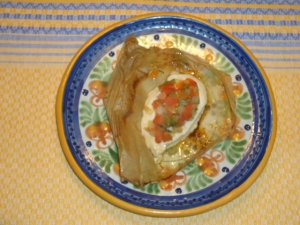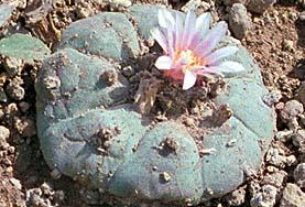Mexican Kitchen

Throughout most of the Northern Hemisphere, spring means warmer weather and, for many, the gardening bug is biting. In Mexico, we have lived in everything from a small apartment with a diminutive balcony, to a large house with a sizeable yard, and have grown some basic kitchen ingredients in each of them. Now that we spend much of our time traveling, a few potted herbs are the best we can do, but at one point we had nearly 20 culinary herbs.
This is doable in a space as small as a window box or two, and even in a small apartment, it requires only a sunny window. Sun is essential here, so choose a window or balcony that gets sun for at least six hours a day. Morning sun, with filtered sun later, is best. Full afternoon sun can damage plants. No windowsill? No problem. If you’re like we are, with metal-framed windows set into the wall, a board and a couple of brackets make an easy shelf under the window. For a more instant fix, place a bookcase under the window and use the top for the planters.
Use window boxes or planters at least 9-12inches deep for larger plants, less for most herbs, along with good potting soil. There should be drainage holes at the bottom, so if the window boxes or planters are inside, place something underneath to catch water. Use organic fertilizer, such as the kind recommended for tomatoes, every three to four weeks.
Keep soil moist, which means watering every three days or so, but use common sense here. If the soil is dry and plants droopy, you will obviously need to water more frequently. If the soil feels moist when you put your finger in it, it’s not time to water yet. If indoor air is dry, mist around the plants frequently.
These are very basic guidelines, and some tips for growing salsa ingredients are given below, but reading some gardening books or websites is highly recommended. Nurseries selling seedlings are always willing to answer questions, and will be knowledgeable about conditions in your particular growing zone.
The basic ingredients for salsa fresca, the fresh Mexican salsa found on so many tables, are chile, cilantro, tomato and onion. A squeeze of lime adds some zip, but this combination works brilliantly on its own, and the salsa can be made with just these four ingredients.
Chiles: Peppers of all kinds are among the vegetables that take most easily to container gardening. They don’t need much space, and their roots are neither deep nor widespread. Jalapeños and serranos both work in containers. Whether growing from seed or starter plants, leave about nine inches between plants.
Cilantro: Herbs do well in containers, their greatest needs being sunlight and water. Plant seeds where you intend to leave the plant, since cilantro does not take well to repotting. It will probably need more water than your other container plants. Whether outside a window, inside a window, or on a balcony, check the plant for water frequently. Cilantro takes a lot of water and grows fast, and harvesting can start when it has reached six inches in height. Young, tender leaves taste best.
Tomatoes: Small tomatoes can be grown in window boxes or in hanging baskets. (I recently saw a You Tube video on making an upside-down hanging tomato planter from a two-gallon plastic bucket, a ubiquitous item in Mexico.) Baskets have the advantage of giving the tomatoes more room to grow, since ideally, each plant should have its own basket. Be sure to plant it so that some of the stem is covered with soil. This will stabilize it and also encourage root production. If using window boxes, it is best to limit tomato plants to one or two plants per box. In either case, plant seedlings, not seeds, and fertilize more often (every two weeks or so) when flowers appear.
Onions: A deep, wide container is needed to grow onions, which should have at least 10 inches of soil depth. A large planter box, tub or bucket with drainage holes will work. For best results in a container, grow onions from sets. Bury each set with the pointed end up, covered by about an inch of soil, spaced about five inches apart. The green tops can be harvested when they have reached about six inches tall.
Whether you grow all, or only a few of these ingredients, or just buy them at the market, salsa fresca is a Mexican culinary essential. Along with béchamel and tomato sauce, this must be one of the most useful sauces ever created. Use it on tostadas, tacos, quesadillas, eggs, grilled beef, chicken or shrimp fajitas, rice dishes, nachos, baked potatoes and, of course, as a dip with totopos (tortilla chips) and in anything else where it seems good.
Lately, I’ve seen several articles with “non-recipes,” which mostly consist of ideas for using an ingredient, rather than formal recipes. In that vein, here is a basic recipe for salsa fresca, and some non-recipe ideas for using it.
Recipe: Salsa Fresca: Basic Fresh Salsa
Published or Updated on: June 6, 2015



